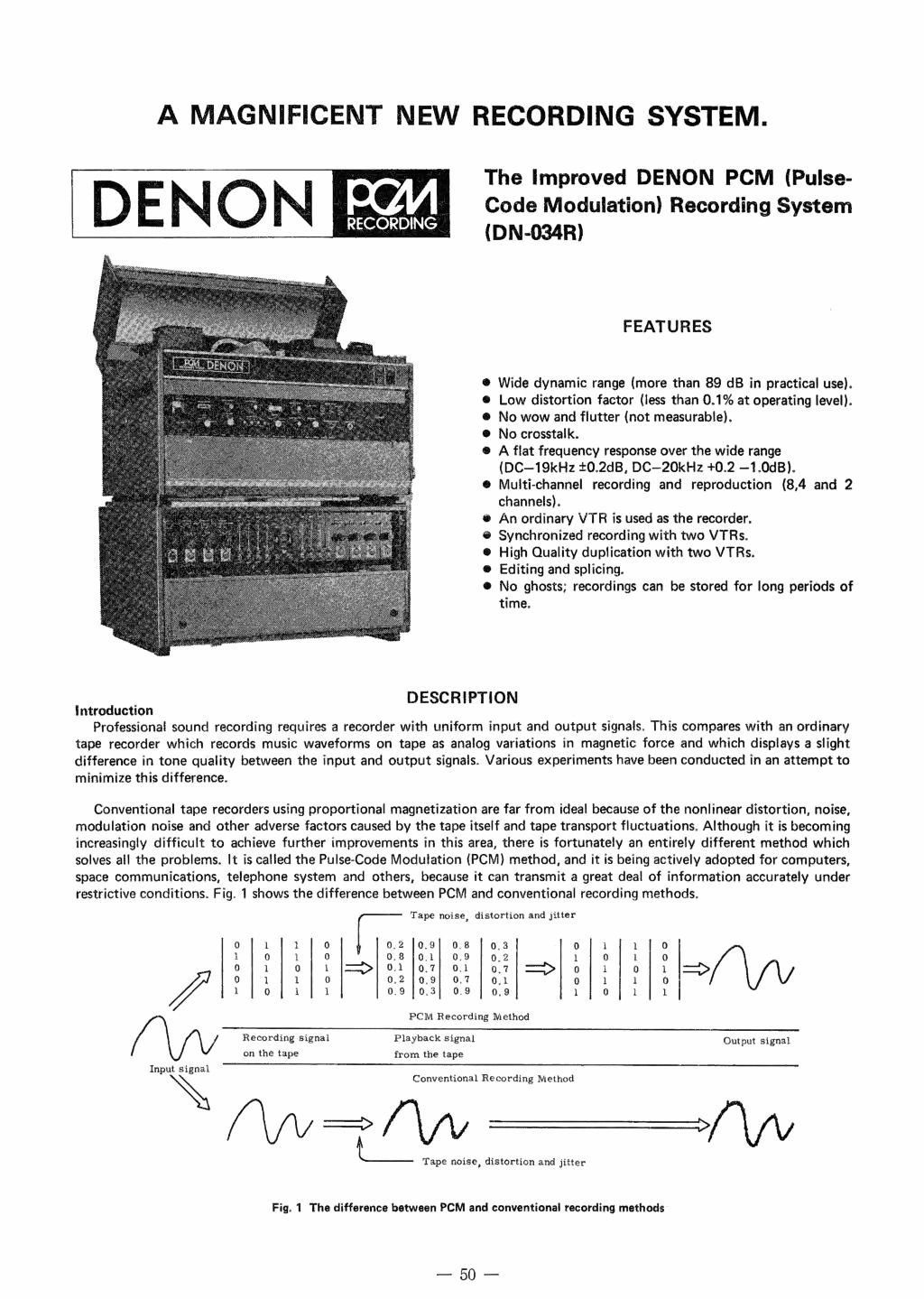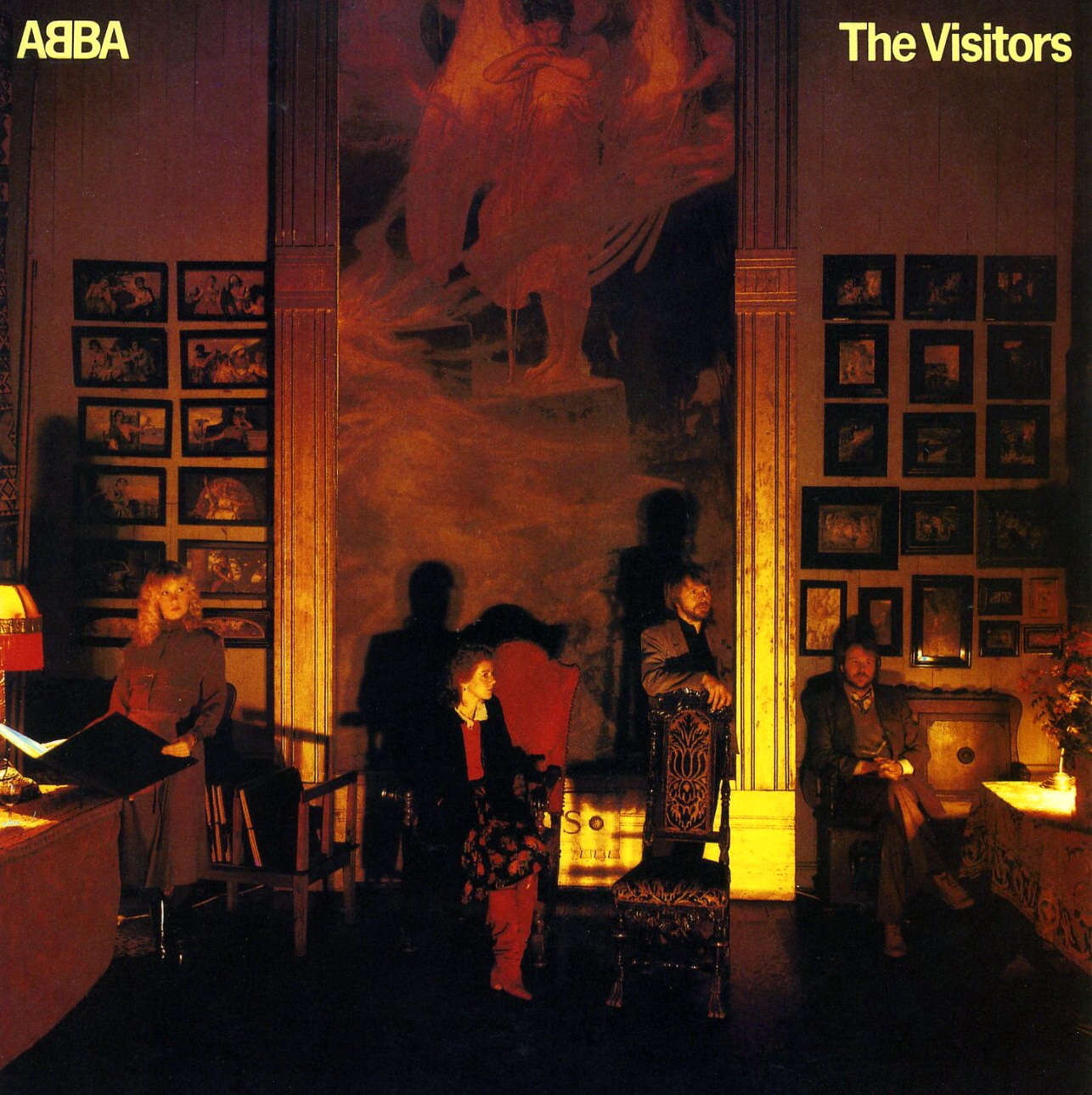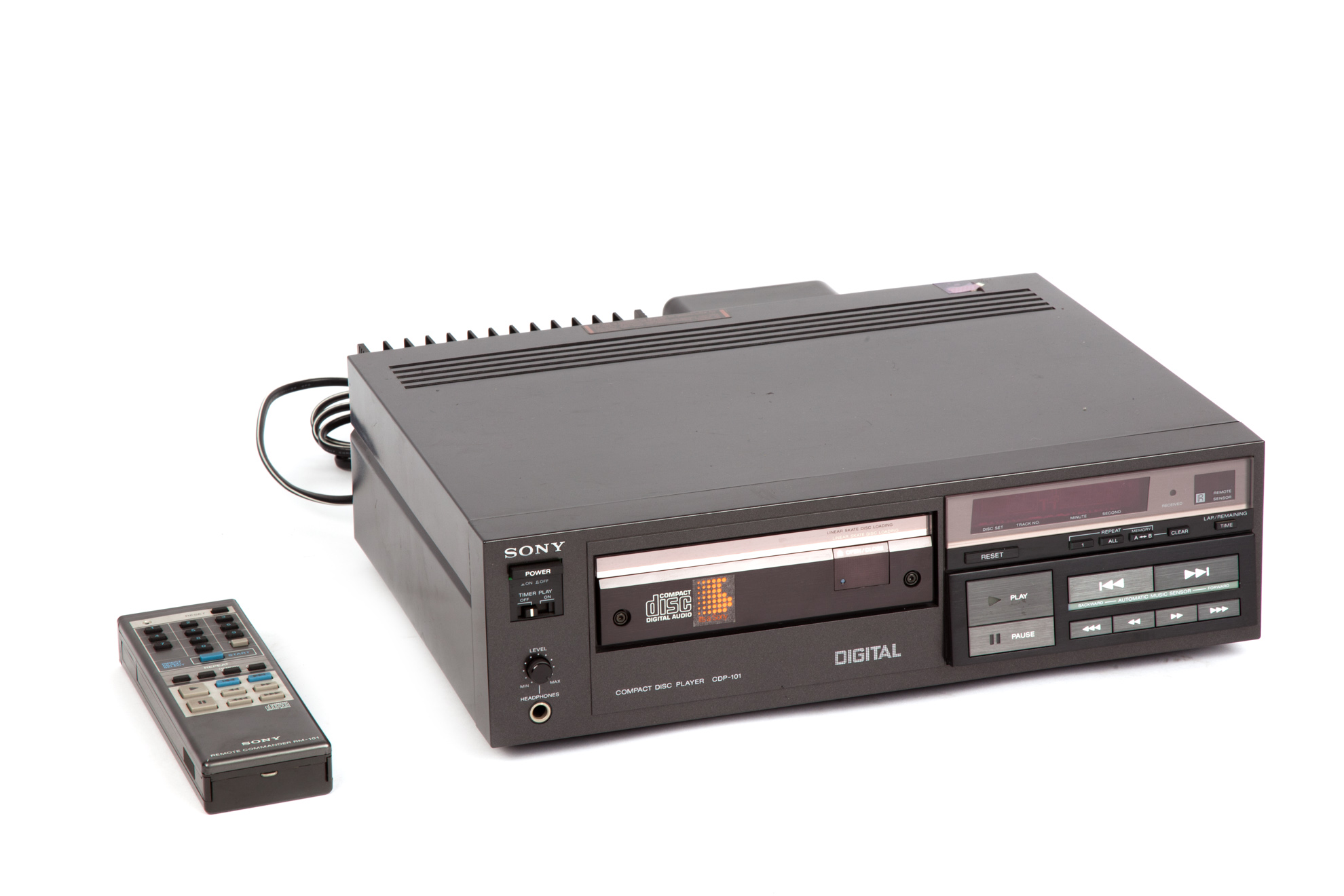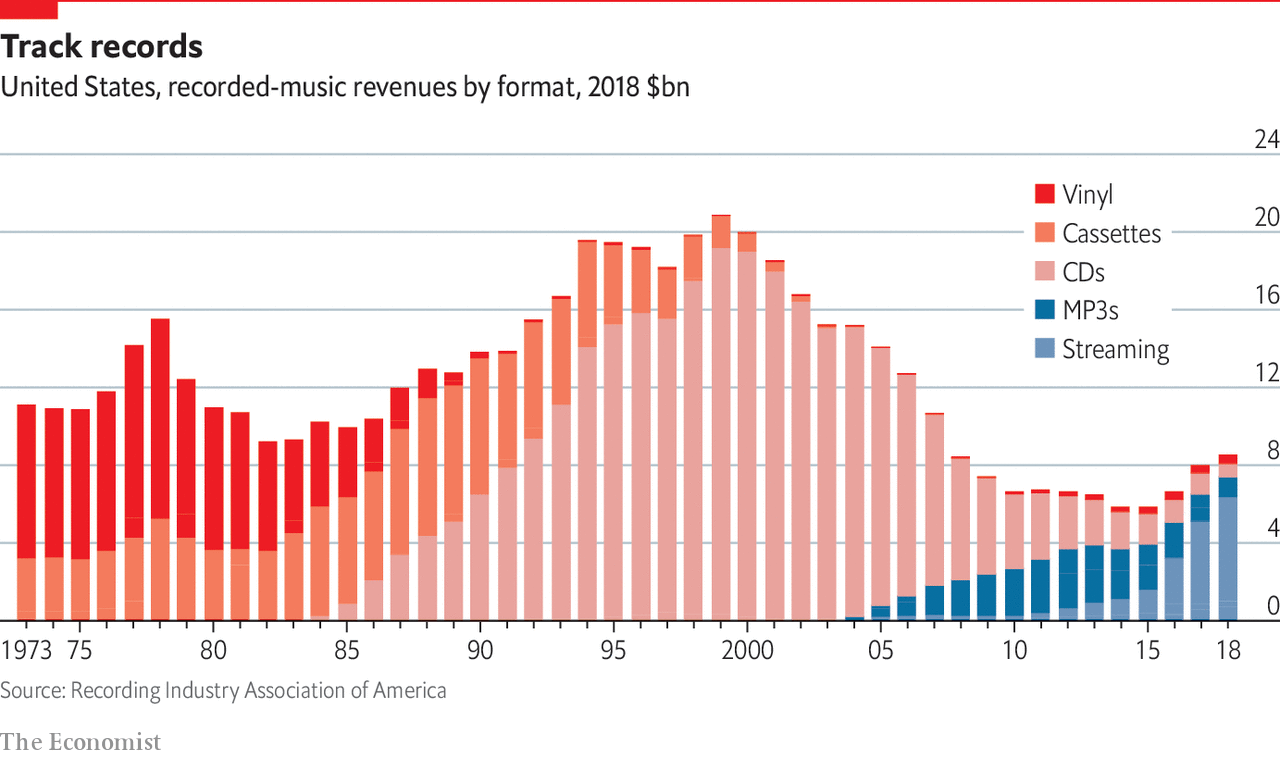The invention of digitisation – i.e. the conversion of continuous analogue signals into discrete signals and binary code consisting of zeros and ones – has completely revolutionised the recording, editing, storage and distribution of music and film since the 1970s. It has led to a dramatic simplification, cost reduction and improvements in quality of all steps of production, but also to a dramatic simplification of duplication and transmission.
As with the development of analogue sound recording, most of the inventions in digital sound recording arose from the research and development of telephony and telegraphy. One of the early challenges of telegraphy and telephone networks was “multiplexing”, i.e. the simultaneous transmission of several communication channels (telephone calls) over the same wire. For this purpose, the telephone calls are bundled by a multiplexer after being modulated onto a carrier signal and then after transmission to the receivers unbundled again by a demultiplexer. As early as around 1900, multiplexing by sampling (creating measured values at discrete, usually equidistant points in time in order to obtain discrete-time signals from a continuous-time signal) was used by various engineers. For example, as early as 1903, the American engineer W. M. Miner used a sampling method with approx. 4,000 Hz to successfully transmit telephone conversations by time-division multiplexing.
With Miner, however, in 1900 it was more of a game of chance whether the demultiplexer reconstructed the original conversations in an intelligible form or not. Miner still lacked the theoretical basis of the “sampling” theory. This was first formulated in 1933 by the Soviet engineer Vladimir Kotelnikov (1908-2005), but his work remained unknown in the West, so that the American mathematician Claude Shannon (1916-2001) independently invented the same theorem in 1948. Shannon based his theory on preliminary work by the American Bell Labs engineer Harry Nyquist (1889-1976) from the 1920s. The sampling theorem states that a signal bandlimited to fmax can be reconstructed exactly from a sequence of equidistant samples if it was sampled at a frequency > 2x fmax. This means that (in compliance with the sampling theorem) with a limited number of discrete measuring points of a continuous original signal, one can reconstruct the continuous frequency course of this original signal without loss – that is, that no information is lost “between the measuring points”.
In the course of time, various modulation methods were developed for different applications (e.g. pulse-density modulation (PDM), pulse-position modulation (PPM), pulse-amplitude modulation (PAM), pulse-number modulation (PNM) etc. By far the most widespread in the audio field is pulse-code modulation (PCM)). In 1937, the British scientist Alec Reeves (1902-1971), employed by the American “International Telephone & Telegraph Inc.” in Paris, developed the so-called pulse code modulation (PCM) for telephone applications. The main aim was to reduce noise during telephone transmission. He received a patent for this in 1938. Due to the complexity of the electronics required for the PCM process, it was not commercially viable to realise it with the tube technology available at the time. This only became possible in the 1960s with the advent of transistor technology. However, Reeve’s PCM process was used during World War II for the “SIGSALY” high security communications system built by Bell Laboratories in 1943 for the highest level of Allied communication, with which e.g. Churchill and Roosevelt, communicated by telephone in encrypted form. The SIGSALY terminal was massive, consisting of 40 racks of equipment. It weighed over 50 tons, and used about 30kW of power, necessitating an air-conditioned room to hold it. SIGSALY is the first system with which sounds were quantised and transmitted using the PCM method (Fig. 40).

Fig. 40 – SIGSALY encryption system from Bell Laboratories, 1943
In order to digitise analogue (continuous) audio data, analogue-to-digital converters (ADC) convert the analogue audio signal into 2 discrete characteristics according to the PCM method:
- Sampling rate: refers to the frequency at which the continuous-time audio signal is sampled (i.e., samples are taken) and converted into a discrete-time signal in times/sec. or Hz.
- Word length: Also bit depth, defines the magnitude of the measuring points at each of the sampling points with which the value-continuous amplitude of the audio signal is converted into a value-discrete signal (quantisation). After coding, it indicates the amplitude of the continuous signal at this point in time in bits.
It was only after the introduction of transistor technology that the state radio organisations BBC in England and NHK in Japan began to develop commercial PCM sound recording technologies in the late 1960s:
- NHK developed the first mono PCM recorder with 30kHz/12bit converter and video tape recording at its research centre in 1967. The concept of converting PCM data into VTR-compatible (video magnetic tape) signals was maintained until the 1990s. In 1969 it was further developed to 2-channel/32kHz/13bit. The Nippon Columbia company collaborated with NHK and a subsidiary of Nippon Columbia, called “Denon”, started to produce commercial digital recordings with this recording system in 1971 – but published still on analogue vinyl. The first digital album released was Steve Marcus and Jiro Inagaki: “Something” in January 1971 (Fig. 41). By 1972 Denon had developed its own digital recording system: the DN-023R with 8 channels, 47.25kHz and 13bit, with which the Smetana Quartet and Mozart‘s string quartets KV458 and KV421 were first recorded in Tokyo in April 1972. This was followed in 1977 by the mobile DN-034R with 8 channels, 47.25 kHz and 14 bits (Fig. 42).
- In 1972, the BBC had developed a 13-channel PCM system to improve the sound of its TV broadcasts. The system converted the sound to PCM format at the TV headquarters and back to analogue at the regionally distributed broadcast facilities. The BBC also developed a 2-channel PCM recording device in the early 1970s, part of which was subsequently licensed to 3M in the USA.

Fig. 41 – Steve Marcus and Jiro Inagaki – Something’, 1971 – First Commercial Digital Music Album

Fig. 42 – Denon DN034R; from: Denon 1980/81 catalogue
In the USA, the company “Soundstream”, founded by Thomas Stockham (1933-2004), followed in 1976 and the “3M” group in 1977 with their own PCM recorders. The Soundstream system was a 4-channel system consisting of a modified Honeywell 5600E tape machine (HTD) with 1” Ampex 466 tape and self-developed conversion and control electronics (DTR – Digital Tape Recorder) (Fig. 43). The DTR was based on an Analogic MP8016 16Bit A/D converter and an Analogic MP1926A D/A converter, each with a sampling rate of 50kHz (4Bit control data was added to the 16Bit of useful signal, so that 20Bit is often mentioned). The special feature of the Soundstream system was the digital editing system, consisting of a PDP 11/60 mainframe computer from “Digital Equipment Co.” (DEC) and proprietary software. With the system, the waveform of the recordings could be graphically displayed and edited. The Soundstream system was thus the first digital audio workstation (DAW).

Fig. 43 – Soundstreams Digital Tape Recorder (DTR), 1977
In an interview with Audio Magazine in 1994, the “New World Records” recording manager Jerry Bruck tells of the first test recording with the Soundstream system. New World Records was preparing a Santa Fe Opera recording of Virgil Thomson’s “The Mother of Us All” in the summer of 1976. Tom Stockham contacted him and asked if he could run his Soundstream system in parallel with the recording for testing purposes. Bruck agreed and set up a line from New World Records’ mixing desk for Soundstream in Santa Fe. Bruck recounted, “I realised we were dealing with something completely new here when Tom [Stockham] called me on my intercom and said he noticed a hum in our signal. I turned up the volume on my monitor but couldn’t hear anything. I asked him where he thought he could hear the hum. He checked his equipment and called back: ‘at about -80 dB’. Gulp! At that time, the best tape recorders with noise reduction were able to realise a signal-to-noise ratio of 70 dB. A hum at -80 dB was lost in the general tape noise as far as we were concerned.”
The first digitally recorded pop album, Ry Cooder: ‘Bop Till You Drop’, was recorded by Warner Brother Records in 1979 on a 32-channel 50kHz/16bit digital recording system from 3M. DECCA developed their own 2-channel 48kHz/18bit system with IVC helical-scan video recording equipment at their Recording Centre in 1978. DECCA’s first commercial recording was the Vienna Philharmonic New Year’s Concert under Willi Boskovsky on January 1, 1979. Philips used the Sony 1600 2-channel PCM system to produce the first digital recording of Händel’s Concerti Grossi op.3 under Neville Marriner. The other record labels followed suit in the late 1970s with their own releases. No one could afford, not to be part of the digital development, e.g.:
- Frederick Fennell: The Cleveland Symphonic Winds, Telarc, 1978 (recording with: digital 4-channel, 50kHz/16bit system by Soundstream)
- Stravinsky: The Firebird, Telarc, 1978 (recording with: digital 4-channel, 50kHz/16bit system by Soundstream)
- Tchaikovsky: 1812, Telarc, 1978 (recording with: digital 4-channel, 50kHz/16bit system by Soundstream)
- Debussy: Image pour orchestre with the London Symphony Orchestra under A. Previn, EMI, 1979
- Strauss: Also sprach Zarathustra with the Philadelphia Orchestra under E. Ormandy, EMI
- Ry Cooder: Bop Till You Drop, Warner Brothers, 1979 (recorded with: Digital 32-track, 50kHz/16bit system by 3M) – first digital pop album
- New Year’s Concert Vienna: Vienna Philharmonic, Willi Boskovsky, DECCA 1979 (recording with: self-developed digital system from DECCA Recording Center) – first European commercial digital recording
- v. Beethoven: Fidelio, Chicago Symphony Orchestra under Solti, DECCA, 1979 (Recording with: self-developed digital system from DECCA Recording Center)
- Tchaikovsky: Violin Concerto, L. Maazel, G. Kremer, DG, 1979
- A. Mozart: Zauberflöte, Berliner Philharmoniker, H.v. Karajan, DG, 1980
- Strauss: Eine Alpensymphonie with the Berliner Philharmoniker under H.v. Karajan, DG, 1980
While the early digital recordings of e.g. DECCA and EMI sounded excellent, the first digital attempts at Deutsche Grammophon were of rather mixed quality.
All the major labels did make digital multitrack recordings from the end of the 1970s, which supposedly did not leave the digital path (DDD). But since digital mixing was only possible to a limited extent until the end of the 1980s, many recordings were made digitally or partly digital, partly analogue, but subsequently mixed at least partly in the analogue domain. The consequences of multiple digital/analogue and analogue/digital conversions in the production process can still be heard today in many recordings of the late 70s and early 80s: the recordings are noisy either completely or in parts, although they were recorded digitally (e.g. Dire Straits: Love over Gold, Warner Brothers Records, 1982 (where some tracks were recorded digitally others analogue); Alfred Brendel, Neville Marriner: Mozart Piano Concertos KV 450 & KV467, Philips, 1981; Philippe Entrement: Satie Gymnopédies, CBS, 1979).
Until 1983, all digital recordings were still released exclusively in analogue form on vinyl – from 1983 onwards, they were released in parallel on vinyl and on CD. The introduction of the compact disc (CD) as a sound carrier took place in 1981 at the Berliner Funkausstellung by Sony/Philips and Polygram. Karajan called it “a miracle”. The CD is a further development of LaserDisc technology. One of its inventors is David Paul Gregg (1923-2001), who had already developed analogue optical storage media for film storage in 1958 at Western Electric for the Westrex system. In 1962, he filed a corresponding patent. In 1966, James T. Russel (born 1931) filed a patent for optical storage of digital binary data, which was granted in 1970. Gregg’s and Russel’s storage media were floppy media read by backlighting, which had a number of disadvantages. Researchers at Philips (Pieter Kramer and Klaas Compaan), building on Gregg and Russel’s ideas, developed an optical video data carrier in 1969 that was read by reflection with a laser. This was basically the format that is still used in all optical discs today (CD, DVD, Bluray etc.). From this, Philips first developed the LaserDisc for video applications together with the American “Music Corporation of America” (MCA) in 1978 and then Philips together with Sony developed the Compact Disc (Fig. 44) for audio applications in 1979. The audio CD is a disk 1.2mm thick with a diameter of 12cm or 8cm (CD single), consisting of a polycarbonate carrier to which a thin aluminium layer is applied. With the Red Book standard of 44.1kHz and 16Bit, it achieves a frequency bandwidth of 5Hz to 20kHz and a dynamic range of 96dB.

Fig. 44 – Audio Compact Disc
The first audio CD released was ABBA’s “The Visitors” in August 1982 (Fig. 45), followed by Billy Joel’s “52nd Street” in October 1982. The first CDs and CD players (Figs. 46 & 47) were then widely available in shops from early 1983.

Fig. 45 – ABBA: The Visitors, 1982 – first CD released

Fig. 46 – Sony’s first CD player CDP-101, 1982

Fig. 47 – Philips first CD player CD-100, 1983
Despite the initially high prices for CDs and also for the players, they were in great demand. Within 5 years, CD sales overtook those of vinyl records in 1988 (Fig. 48). An important part of the success was the early standardisation with the Rainbow standards in 1980 (of which the CD’s Red Book standard is only one), which helped to avoid another format war, as with the video formats. It made it possible for any CD from any record label to be played on any CD player from any equipment manufacturer.

Fig. 48 – Recorded music sales in the USA 1973-2018 in 2018 USD; Source: RIAA, Economist
What the music industry did not foresee at the time were the far-reaching consequences for the portability of music, which would ultimately overturn the entire distribution model of the music industry. Promoted by new compression techniques (e.g. MPEG-1 Audio Layer III or MPEG-2 Audio Layer III (mp3 process) of the Frauenhofer Institute) and the increasing availability of internet bandwidth, an exchange of music files via the internet emerged that went far beyond private usage. In 1999, Napster, the first peer-2-peer network, emerged as a digital file-sharing platform. In 2003, the first paid download portals (e.g. iTunes Store) went online and in 2008 the first streaming services (e.g. Spotify) appeared.
With its switch to digital processing, the music industry has unintentionally triggered a paradigm shift: Away from the carrier medium, towards file-based playback:
- With the elimination of the carrier medium, the recording is freed from the limitations of the carrier medium. Until now, every carrier medium limited the maximum possible quality of the reproduction of a recording by its physical and electrical parameters.
- With the disappearance of the carrier medium, the classical distribution apparatus of the music industry, which was geared towards the distribution of physical carrier media (records, tapes, CDs), has also dramatically lost importance. The music industry is far from dying, as was rumoured for a while. However, not much is left of the former titans of the music industry (e.g. Decca, RCA, EMI or Philips) today. Distribution is increasingly taking place through online channels, via download and streaming.
Ironically, vinyl record sales overtook CD sales again in 2019 – albeit at a low level.
From around 2015, the major record labels began to release their original master tapes in HighResolution Audio (mostly 96 kHz / 24 bit or 192 kHz / 24 bit). In contrast to analogue technology, in the digital domain every copy is identical to the original. The degradation of quality in the analogue copying process, adding distortion and noise with each copy does not exist in the digital domain. These digital “masterfiles” are first generation copies of the original master tapes and thus come closer to the original recording than any previous release on any sound carrier. This then also marks an end point in the development of playback technology: one simply cannot come any closer to the original musical event in retrospect than through the master tape. While it was up to now very expensive and difficult to obtain production copies of master tapes and they had to be played on complicated and expensive reel-to-reel machines, it is now possible for almost anyone to listen to master tapes at low cost.
Modern playback devices are accordingly designed to play digital music files, regardless of file format or resolution quality. For example, the Model 2 from “Digital Audio Systems” (Fig. 49) plays digital files with a resolution of up to 384 kHz streamed from the internal hard disk or via the Internet. It is controlled either classically on the unit or, more comfortably, from the sofa via a tablet with multimedia user interface.

Fig. 49 – Model 2 of the Digital Audio Systems, 2018
© Alexej C. Ogorek

